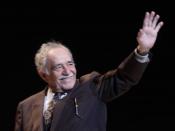Gabriel Garcia Marquez's Chronicle of a Death Foretold is a relatively small book, yet it is open to countless interpretations as to the book's overall purpose. Here I will discuss two such interpretations: Isabel Alvarez-Borland's analysis sees the novella as asking why a senseless murder was allowed to occur; Carlos J. Alonso focuses on the point of the text being a ritual means for redemption. Both analyses are strongly argued and very conceivable, offering valuable insights into the text and developing meaningful interpretations.
Isabel Alvarez-Borland's "From Mystery to Parody: (Re)Readings of Garcia Marquez's Cronica de una muerte anunciada" asks why the town allowed the murder to transpire when there was ample opportunity to stop it. The analysis blames the town's hypocritical honor codes for Santiago Nasar's death and indicts the townspeople for their complicity. In this society, the women must remain virgins until marriage or else they are considered defiled and damaged.
The men, on the other hand, seem to do as they please with no social repercussions. They even solicit whores before and even after marriage. For example, the narrator declares of Maria Alejandrina Cervantes, the town whore, "It was she who did away with my generation's virginity" (Garcia Marquez 74).
Indeed, in this view, the townspeople's mentality is to blame. This social code is a blatant double standard, strictly censoring the women's sexuality while the men go out and have promiscuous sex. In reality, Santiago is himself quite the womanizer, going around "nipping the bud of any wayward virgin who began showing up in those woods" (104). The town is so entrenched in these antiquated beliefs that the Vicario brothers are eventually absolved of the murder. The court accepts the argument that the murder was a necessary defense of honor, and after three years in prison, they...


